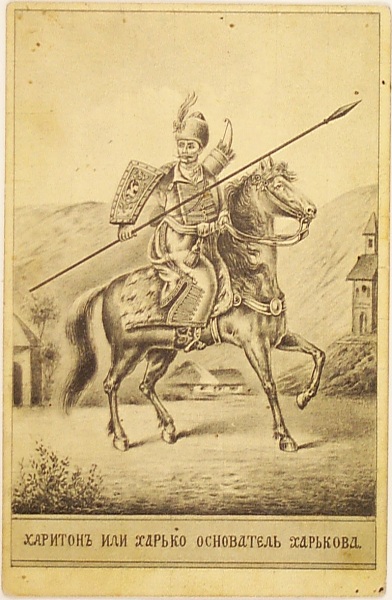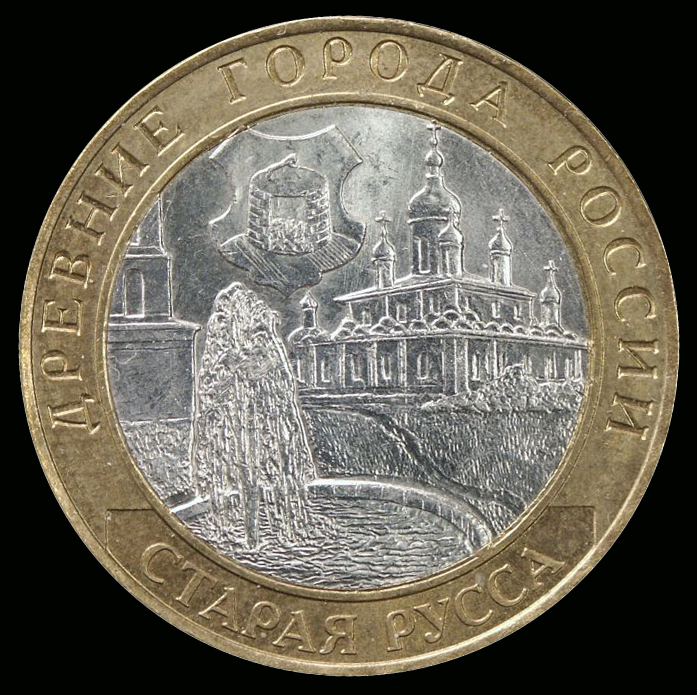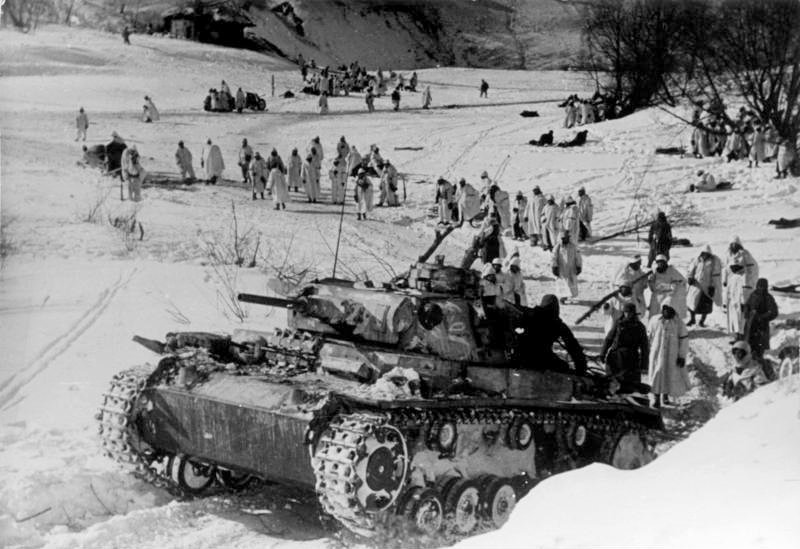|
Timur Frunze
Timur Mikhailovich Frunze (russian: Тимур Михайлович Фрунзе; 5 April 1923 – 19 January 1942) was a Soviet fighter pilot and posthumous recipient of the title Hero of the Soviet Union. He was the son of Red Army commander and People's Commissar for Military Affairs Mikhail Frunze. Early life Frunze was born on 5 April 1923 in Kharkov, Ukrainian SSR, to Mikhail and Sophia Frunze. He was named after the founder of Timurid Empire Tamerlane, whose war skills were admired by his father. His father was the revolutionary leader and reformer of the Red Army, who in January 1925 was appointed People's Commissar for Military and Navy Affairs and President of the Military Revolutionary Council. However, he died of surgery in October when Timur was only two years old. Timur's mother Sophia committed suicide in 1926. As a result, both Timur and his sister Tatyana were raised by their grandmother. Following the death of their grandmother in 1931, Timur and Tatyana were ad ... [...More Info...] [...Related Items...] OR: [Wikipedia] [Google] [Baidu] |
Kharkov
Kharkiv ( uk, Ха́рків, ), also known as Kharkov (russian: Харькoв, ), is the second-largest city and municipality in Ukraine.Kharkiv "never had eastern-western conflicts" '''' (23 October 2014) Located in the northeast of the country, it is the largest city of the historic region. Kharkiv is the of < ... [...More Info...] [...Related Items...] OR: [Wikipedia] [Google] [Baidu] |
Kliment Voroshilov
Kliment Yefremovich Voroshilov (, uk, Климент Охрімович Ворошилов, ''Klyment Okhrimovyč Vorošylov''), popularly known as Klim Voroshilov (russian: link=no, Клим Вороши́лов, ''Klim Vorošilov''; 4 February 1881 – 2 December 1969), was a prominent Soviet military officer and politician during the Stalin era. He was one of the original five Marshals of the Soviet Union, the highest military rank of the Soviet Union, and served as Chairman of the Presidium of the Supreme Soviet, the nominal Soviet head of state, from 1953 to 1960. Born to a Russian worker's family in modern Ukraine, Voroshilov took part in the Russian Revolution of 1917 as an early member of the Bolsheviks. He served with distinction at the Battle of Tsaritsyn, during which he became a close friend of Stalin. Voroshilov was elected to the Central Committee of the Communist Party in 1921, and in 1925 Stalin appointed him People's Commissar for Military and Navy Affair ... [...More Info...] [...Related Items...] OR: [Wikipedia] [Google] [Baidu] |
Vsevolod Merkulov
Vsevolod Nikolayevich (Boris) Merkulov (russian: Всеволод Николаевич Меркулов; – 23 December 1953) was the head of NKGB from February to July 1941, and again from April 1943 to March 1946. He was a leading member of what was later derisively described as the " Beria gang". Life and career Merkulov was born in 1895 in Zagatala in the Tiflis Governorate (present-day Azerbaijan) to a Russian- Armenian family. In 1913, he graduated from the Tiflis Gymnasium with a gold medal and became a student at Saint Petersburg University, Department of Physics and Mathematics. From 1921 to 1922, he worked as a detective at the Transportation Unit of the Cheka in Georgia. From 1925 to 1931, Merkulov held the posts of Head of Secret Operations Directorate and Deputy Head of GPU of Adzharistan. Merkulov was People's Commissar of State Security of the USSR from 3 February 1941 until 20 July 1941, when the NKGB again fell under control of the NKVD as GUGB. From ... [...More Info...] [...Related Items...] OR: [Wikipedia] [Google] [Baidu] |
Bf 110
The Messerschmitt Bf 110, often known unofficially as the Me 110,Because it was built before ''Bayerische Flugzeugwerke'' became Messerschmitt AG in July 1938, the Bf 110 was never officially given the designation Me 110. is a twin-engine (Destroyer, heavy fighter), fighter-bomber (''Jagdbomber'' or ''Jabo''), and night fighter (''Nachtjäger'') developed in Nazi Germany in the 1930s and used by the Luftwaffe during World War II. Hermann Göring was a proponent of the Bf 110, believing its heavy armament, speed, and range would make the Bf 110 the Luftwaffe’s premier offensive fighter. Early variants were armed with two MG FF 20 mm cannon, four 7.92 mm (.312 in) MG 17 machine guns, and one 7.92 mm (.312 in) MG 15 machine gun for defence (later variants would replace the MG FFs with MG 151s and the rear gunner station would be armed with the twin-barreled MG 81Z). Development work on an improved type to replace the Bf 110 - the Messerschmitt Me 210 - began befo ... [...More Info...] [...Related Items...] OR: [Wikipedia] [Google] [Baidu] |
Bf 109
The Messerschmitt Bf 109 is a German World War II fighter aircraft that was, along with the Focke-Wulf Fw 190, the backbone of the Luftwaffe's fighter force. The Bf 109 first saw operational service in 1937 during the Spanish Civil War and was still in service at the end of World War II in 1945. It was one of the most advanced fighters when it first appeared, with an all-metal monocoque construction, a closed canopy, and retractable landing gear. It was powered by a liquid-cooled, inverted-V12 aero engine. It was called the Me 109 by Allied aircrew and some German aces, even though this was not the official German designation. It was designed by Willy Messerschmitt and Robert Lusser who worked at Bayerische Flugzeugwerke during the early to mid-1930s. It was conceived as an interceptor, although later models were developed to fulfill multiple tasks, serving as bomber escort, fighter-bomber, day-, night-, all-weather fighter, ground-attack aircraft, and reconnaissan ... [...More Info...] [...Related Items...] OR: [Wikipedia] [Google] [Baidu] |
Henschel Hs 126
The Henschel Hs 126 was a German two-seat reconnaissance and observation aircraft of World War II that was derived from the Henschel Hs 122. The pilot was seated in a protected cockpit under the parasol wing and the gunner in an open rear cockpit. The prototype aircraft frame was that of a Hs 122A fitted with a Junkers engine. The Hs 126 was well received for its good short takeoff and low-speed characteristics which were needed at the time. It was put into service for a few years, but was soon superseded by the general-purpose, STOL Fieseler Fi 156 ''Storch'' and the medium-range Focke-Wulf Fw 189 "flying eye". Development The first prototype was not entirely up to ''Luftwaffe'' standards; it was followed by two more development planes equipped with different engines. Following the third prototype, ten pre-production planes were built in 1937. The Hs 126 entered service in 1938 after operational evaluation with the '' Legion Condor'' contingent to the Spanish Civil War. Op ... [...More Info...] [...Related Items...] OR: [Wikipedia] [Google] [Baidu] |
Staraya Russa
Staraya Russa ( rus, Старая Русса, p=ˈstarəjə ˈrusːə) is a town in Novgorod Oblast, Russia, located on the Polist River, south of Veliky Novgorod, the administrative center of the oblast. Its population has steadily decreased over the past years, going from 41,538 recorded in the 1989 Census to 35,511 in the 2002 Census to 31,809 in the 2010 Census. Etymology The origin of the name of Staraya Russa is unclear. The most involved and widespread hypothesis was presented by philologists and linguists R. A. Akheyeva, V. L. Vasilyev, and M.V. Gorbanevsky. According to this hypothesis, ''Russa'' comes from Rus'—a Slavic people, who settled in the vicinity to control trade routes leading from Novgorod to Polotsk and Kiev—which, in turn, is usually thought to originate from an Old Norse term for "the men who row" (''rods-'') as rowing was the main method of navigating the rivers of Eastern Europe, and that it could be linked to the Swedish coastal ... [...More Info...] [...Related Items...] OR: [Wikipedia] [Google] [Baidu] |
Demyansk Pocket
The Demyansk Pocket (german: Kessel von Demjansk; russian: Демя́нский котёл) was the name given to the pocket of German troops encircled by the Red Army around Demyansk, south of Leningrad, during World War II's Eastern Front. The pocket existed mainly from 8 February to 21 April 1942. A much smaller force was surrounded in the Kholm Pocket at the town of Kholm, about to the southwest. Both resulted from the German retreat after its defeat during the Battle of Moscow. The successful defence of Demyansk was achieved by using an airbridge and was a significant development in modern warfare. Its success was a major contributor to the decision by the Army High Command to try the same tactic during the Battle of Stalingrad, but it then failed to save the Sixth Army, commanded by Friedrich Paulus. Encirclement The encirclement began as the Demyansk Offensive Operation, the first phase being carried out from 7 January-20 May 1942 on the initiative of General Lieut ... [...More Info...] [...Related Items...] OR: [Wikipedia] [Google] [Baidu] |
Yakovlev Yak-1
The Yakovlev Yak-1 (russian: Яковлев Як-1) was a Soviet fighter aircraft of World War II. The Yak-1 was a single-seat monoplane with a composite structure and wooden wings; production began in early 1940.Angelucci and Matricardi 1978, p. 239. The Yak-1 was a maneuverable, fast and competitive fighter aircraft. The composite-wooden structure made it easy to maintain and the engine proved to be reliable.Snedden 1997, p. 71. It formed the basis for subsequent developments from the Yakovlev bureau. It was the founder of a family of aircraft, with some 43,000 being built.Gunston 1998, p. 88.Ethell 1995, p. 163. As a reward, designer Alexander Yakovlev was awarded the Order of Lenin ( Russian ) (the highest civilian decoration bestowed by the Soviet Union), a 100,000 ruble prize, and a ZIS motor car.Jackson 2003, p. 160.Matricardi 2006, p. 77. Design and development Before the war, Yakovlev was best known for building light sports aircraft. His Yak-4 light bomb ... [...More Info...] [...Related Items...] OR: [Wikipedia] [Google] [Baidu] |
Operation Barbarossa
Operation Barbarossa (german: link=no, Unternehmen Barbarossa; ) was the invasion of the Soviet Union by Nazi Germany and many of its Axis allies, starting on Sunday, 22 June 1941, during the Second World War. The operation, code-named after Frederick Barbarossa ("red beard"), a 12th-century Holy Roman emperor and German king, put into action Nazi Germany's ideological goal of conquering the western Soviet Union to repopulate it with Germans. The German aimed to use some of the conquered people as forced labour for the Axis war effort while acquiring the oil reserves of the Caucasus as well as the agricultural resources of various Soviet territories. Their ultimate goal was to create more (living space) for Germany, and the eventual extermination of the indigenous Slavic peoples by mass deportation to Siberia, Germanisation, enslavement, and genocide. In the two years leading up to the invasion, Nazi Germany and the Soviet Union signed political and economic pacts fo ... [...More Info...] [...Related Items...] OR: [Wikipedia] [Google] [Baidu] |
I-26 , a road in the United States of America
*
{{Letter-NumberCombDisambig ...
I26 may refer to: * Interstate 26 Interstate 26 (I-26) is a main route of the Interstate Highway System in the Southeastern United States. Nominally east–west, as indicated by its even number, I-26 runs from the junction of U.S. Route 11W (US 11W) and US 23 in ... [...More Info...] [...Related Items...] OR: [Wikipedia] [Google] [Baidu] |
Anastas Mikoyan
Anastas Ivanovich Mikoyan (; russian: Анаста́с Ива́нович Микоя́н; hy, Անաստաս Հովհաննեսի Միկոյան; 25 November 1895 – 21 October 1978) was an Armenian Communist revolutionary, Old Bolshevik and Soviet statesman. He was the only Soviet politician who managed to remain at the highest levels of power within the Communist Party while that power oscillated between the Central Committee and the Politburo. His career extended from the days of Lenin, to the eras of Stalin and Khrushchev, to his peaceful retirement under Brezhnev. An early convert to the Bolshevik cause, Mikoyan participated in the Baku Commune under the leadership of Stepan Shahumyan during the Russian Civil War in the Caucasus. In the 1920s, he served as the First Secretary of the North Caucasus region. During Stalin's rule, Mikoyan held several high governmental posts, including that of Minister of Foreign Trade. However, by the 1940s, Mikoyan began to lose ... [...More Info...] [...Related Items...] OR: [Wikipedia] [Google] [Baidu] |







_side-view_silhouettes.png)
.jpg)
